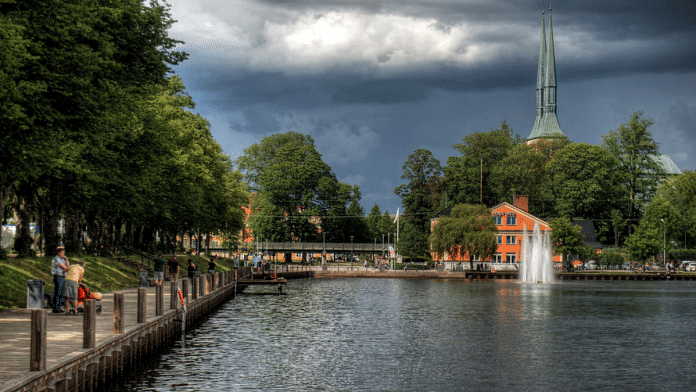The need for building a greener future has never been clearer – but when it comes to travel and tourism, there is a core tension between the economic benefits that more travellers bring and the environmental impacts they can cause.
Despite travel and tourism supporting an estimated 10% of global gross domestic product and roughly one in 10 jobs worldwide, consumers are increasingly aware of the environmental impacts of their wanderlust.
While many tourists are aware of sustainable travel and tourism, research conducted by Visa and Oxford Economics found that 41% feel they lack information about sustainable travel options, and 36% feel that available information is not credible.
As a global network facilitating payments across these journeys, Visa has a unique view of travellers’ consumption choices and patterns – and an incredibly powerful data set that can help transform the future of travel. But it will take more than the private sector alone to successfully implement change.
As the world’s leaders gather in Dubai this week at the United Nations Climate Change Conference, also known as COP28, here are four ways that the private and public sectors can think about teaming up in their effort to slow the impact of travel and tourism and protect local communities and ecosystems:
1. Speak the same language
I’m not suggesting that the Tower of Babel could solve the issue of sustainable travel, but the public and private sectors need to come together to agree on a framework for measuring trends in sustainability. Having access to and agreed parameters about how to collect and use high-quality data is a vital resource, allowing policy-makers and businesses to set targets and gauge progress.
Frameworks such as the World Economic Forum’s Travel and Tourism Development Index and the European Commission’s European Tourism Indicators System have proliferated, yet there remains a lack of clarity regarding what constitutes a sustainable travel choice. The private sector can help the public sector close that gap by leveraging the power of alternative sources such as payment transaction data, AI and more.
2. Help close the ‘say-do’ gap
There has long been a notable “say-do” gap in travellers’ stated preferences versus their actual consumption patterns. Visa’s research finds that this gap is largely driven by information barriers: both informational gaps like a lack of accessible information and credibility gaps where information is available but not trusted.
In the payments industry, offering sustainability-focused benefits to cardholder products can enable cardholders to understand the environmental impact of their spending, potentially helping to narrow the say-do gap by encouraging sustainable consumption. How much change we can drive depends on how successful the public and private sectors are at coming together to ensure that consumers have easy access to credible information about sustainable choices.
3. Make local transit truly accessible
Whenever someone visits me in London for the first time, their knee-jerk (and jet-lagged) response to landing at Heathrow is to hop in a taxi. Not only is that a carbon-intensive means of getting around – it’s just not that efficient given traffic and other delays. Tap your phone to ride on the Heathrow Express and you’ll get into the city much quicker, or those on a budget can take the London Underground.
The public and private sectors need to continue to come together to make public transit a simpler way to get around as a tourist. Removing entry barriers with contactless payments is one important way – but there’s even more innovation to be done as new hyper-customized trip-planning apps and technology become available that can tell tourists the fastest or most sustainable way to get around town.
4. Realize that sometimes it is about the destination
When too many people visit an attraction at one time, it may have negative repercussions for local communities and ecosystems. The public and private sectors must come together to encourage attractions and destination management in order to prevent overtourism.
Beaches are a prime example of destinations that are often overcrowded, to the detriment of the local ecosystem. Some national parks in the US, on the other hand, are good examples of places that have successfully implemented reasonable limits on visitors. For example, Muir Woods National Monument in Marin County, California requires visitors to book a reservation in advance.
By taking steps such as imposing reasonable limits on the number of visitors, promoting off-season travel, and introducing dynamic pricing, attractions can limit the likelihood and negative impacts of overtourism.
For example, Visa Destination Insights helped the Lake Tahoe Visitors Authority manage both overcrowding and seasonal lulls at the ski and holiday hotspot on the California/Nevada border. Ultimately, sustainable management of attractions will require careful stewardship and close collaboration between the public and private sectors.
There’s a lot of work ahead – but by bringing together the strength of the public and private sectors, we can strive towards meaningful change.
This article was originally published in the World Economic Forum.



